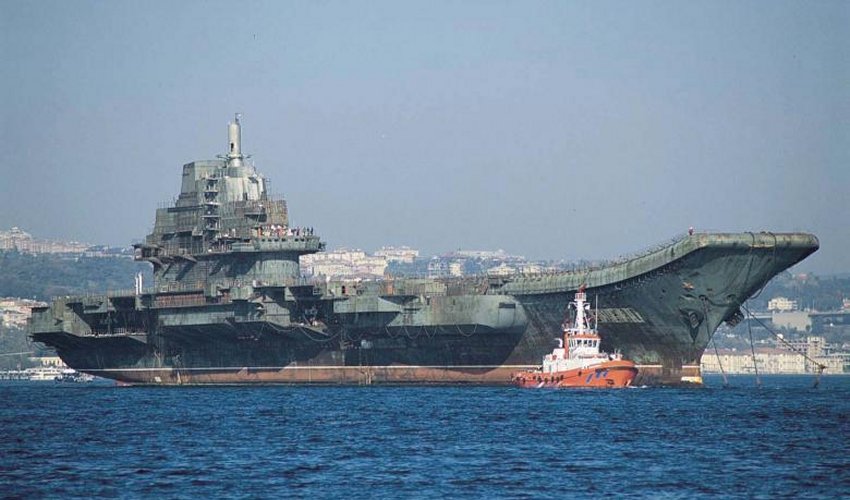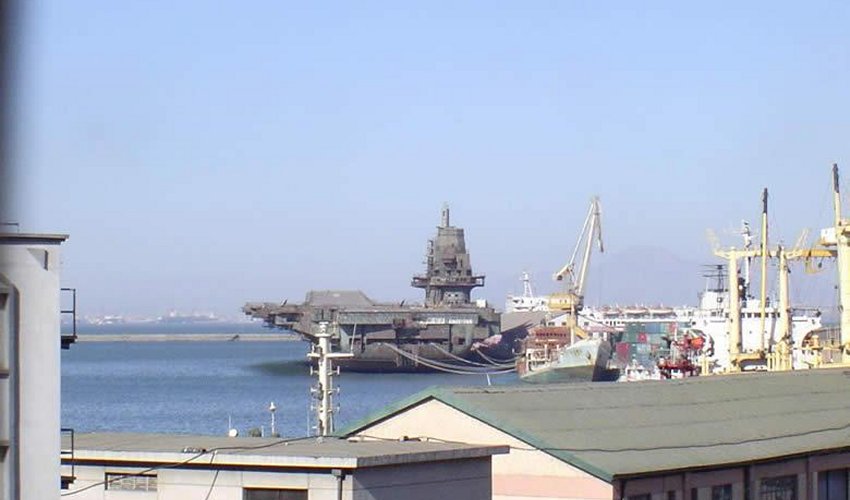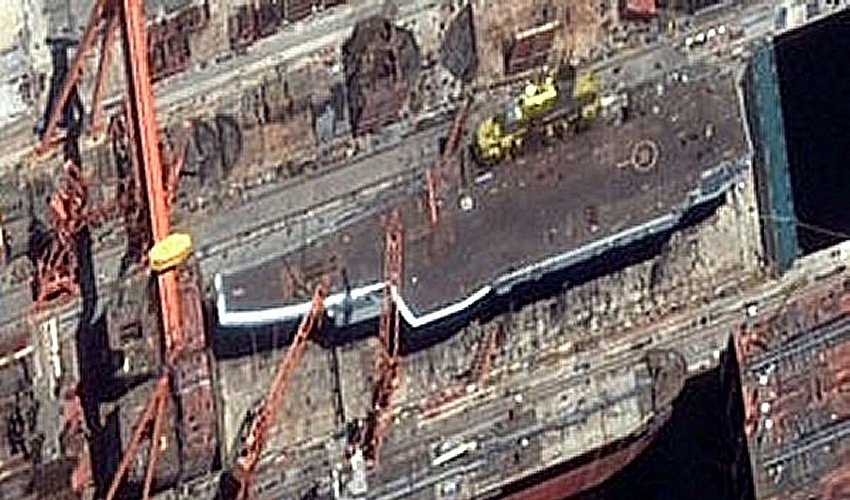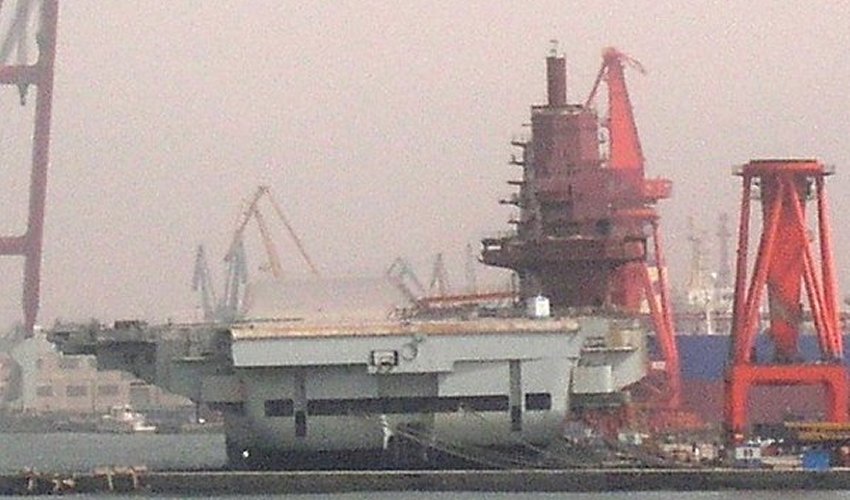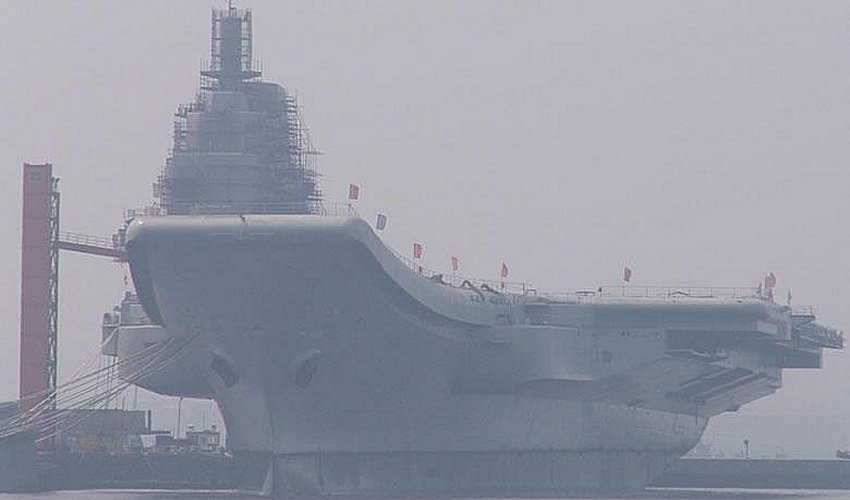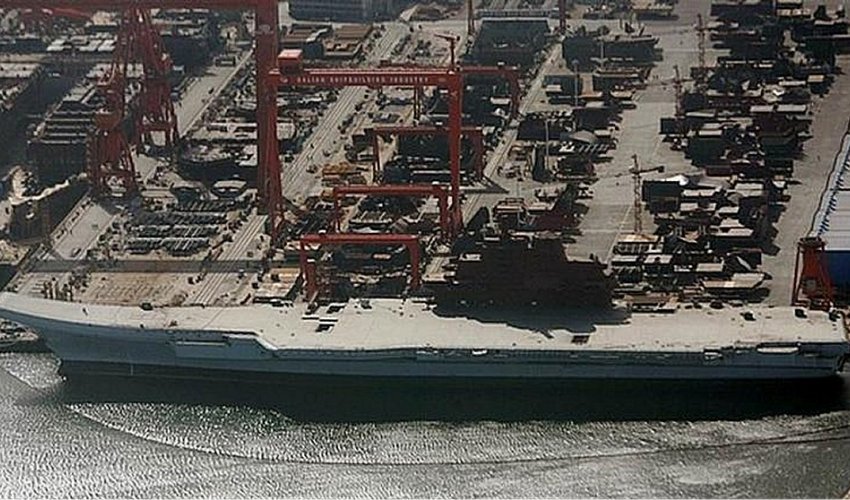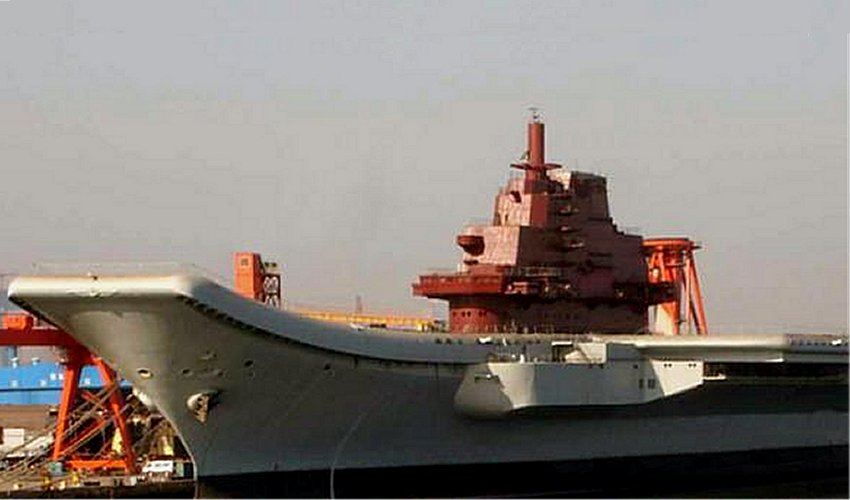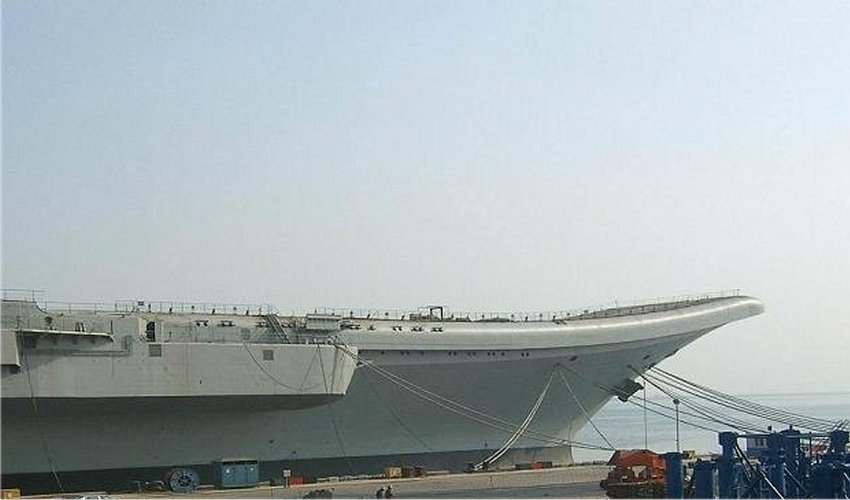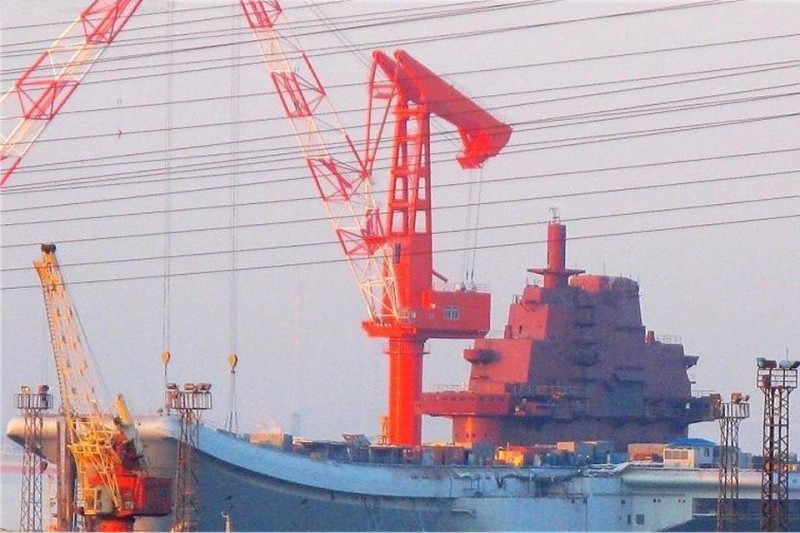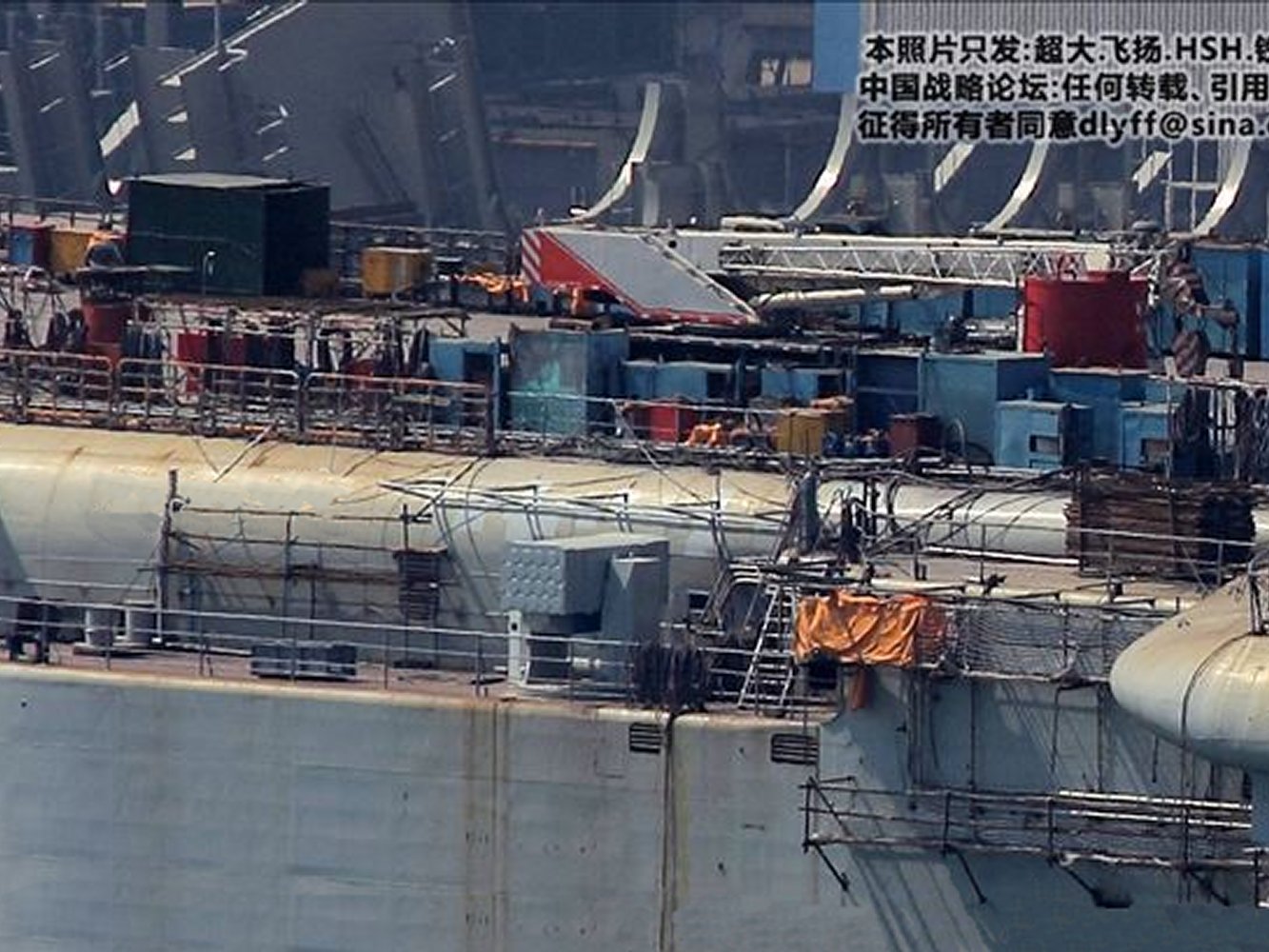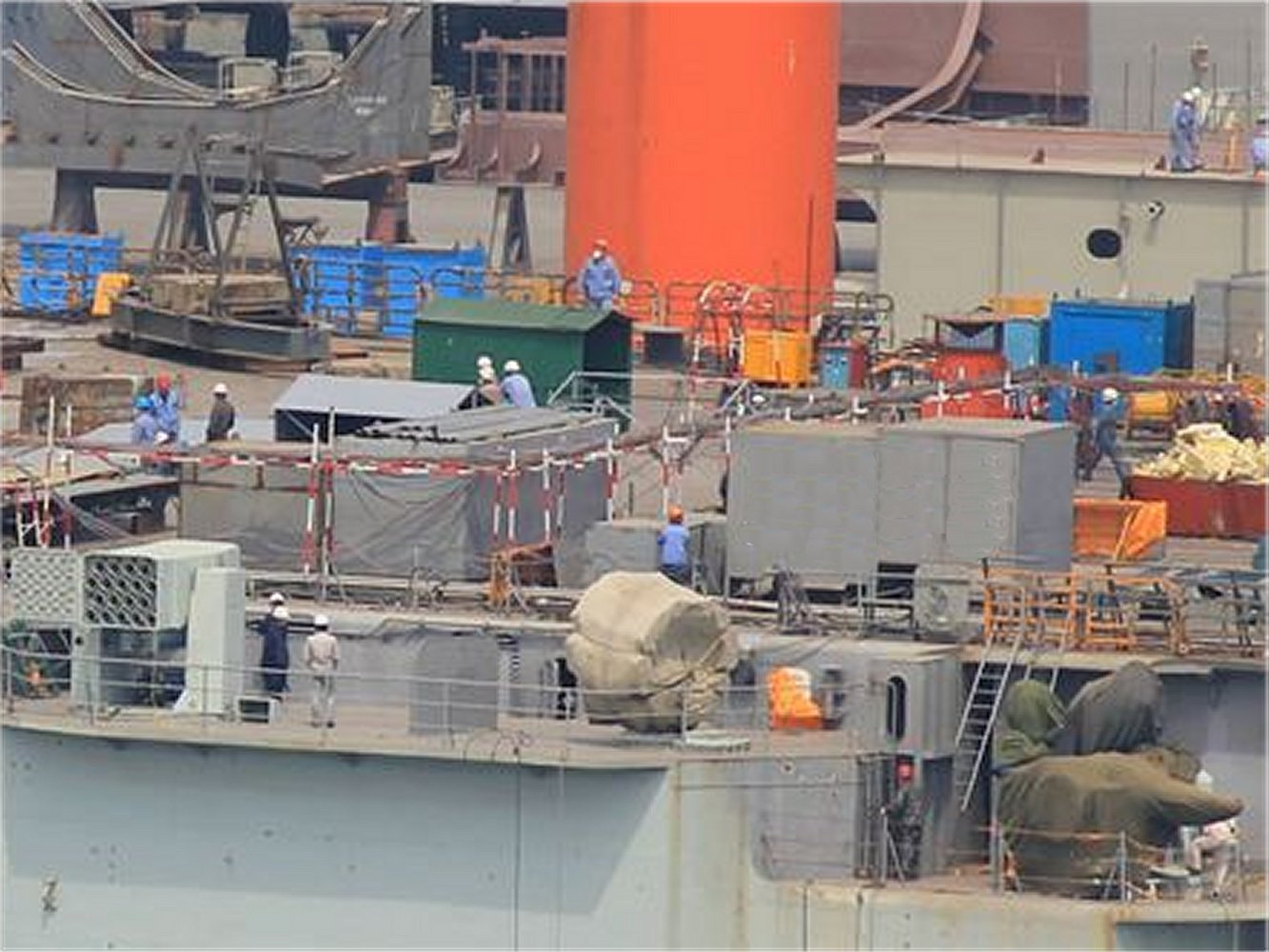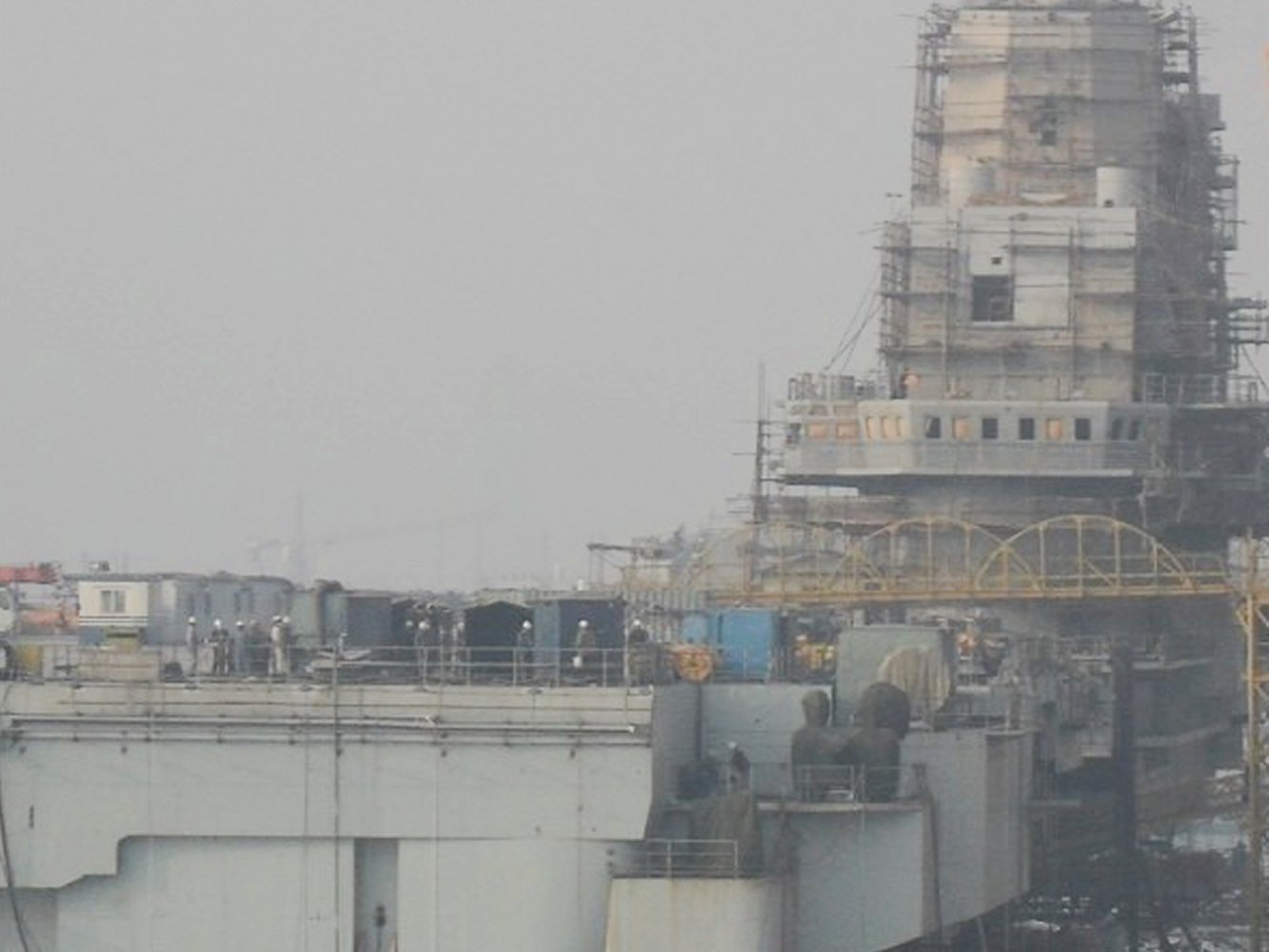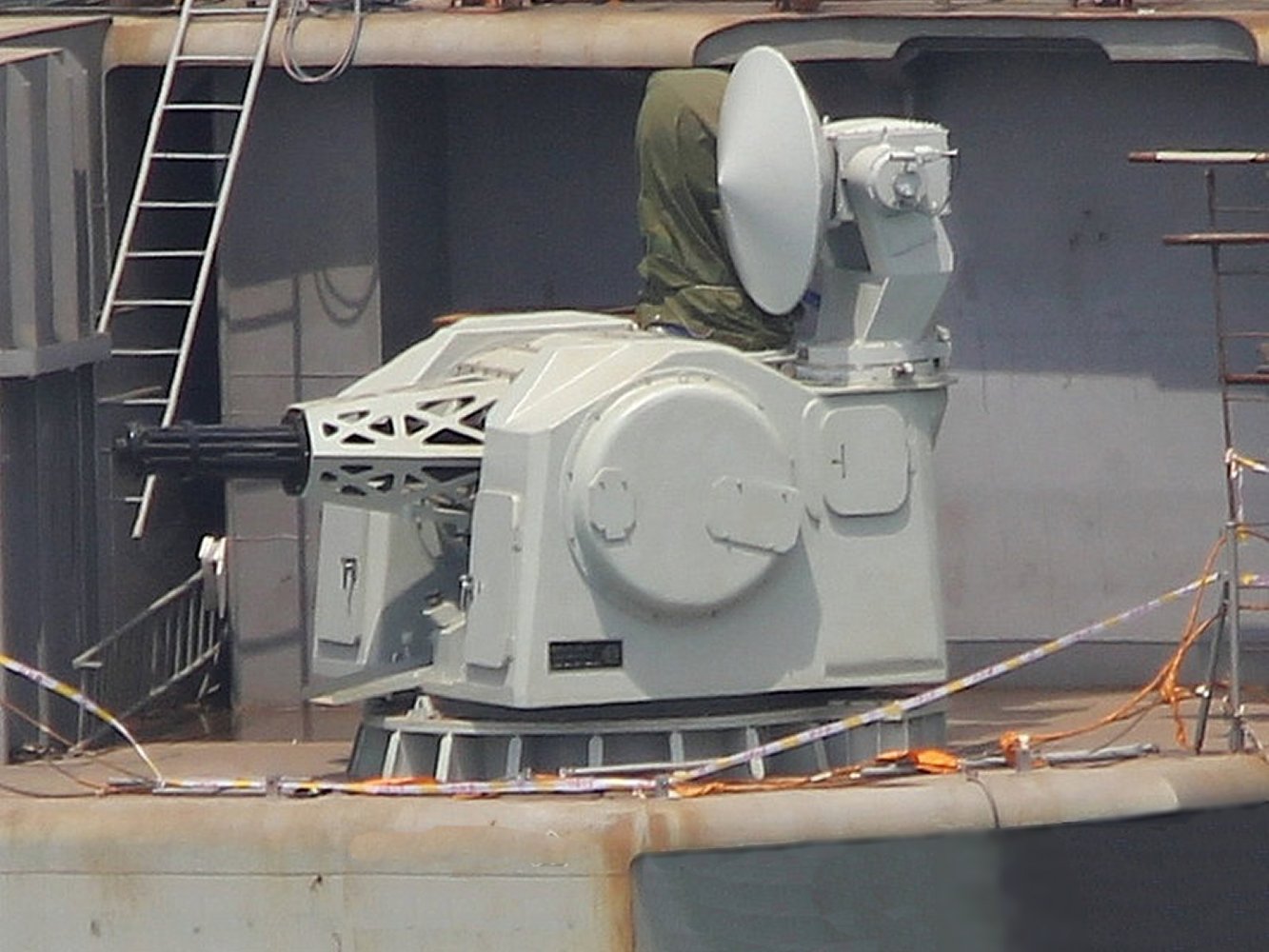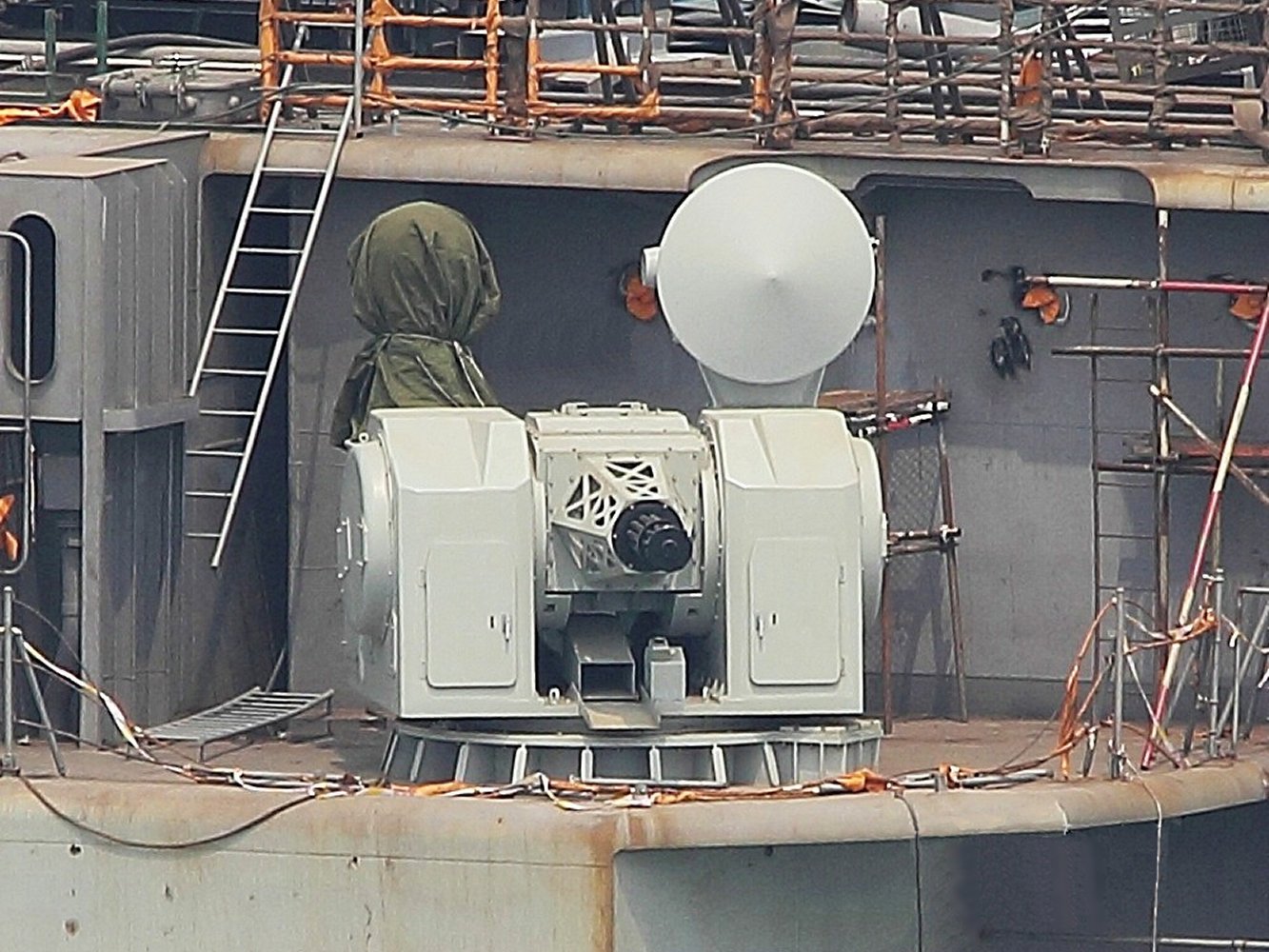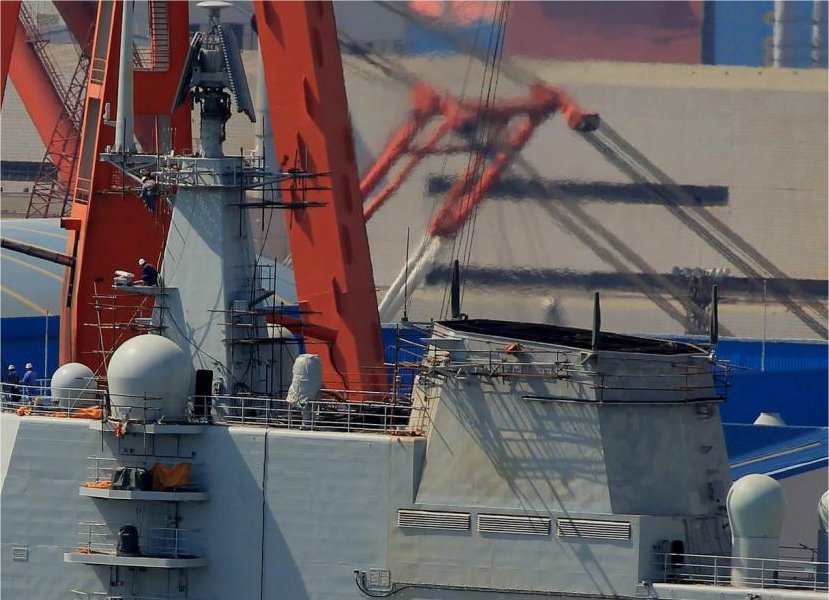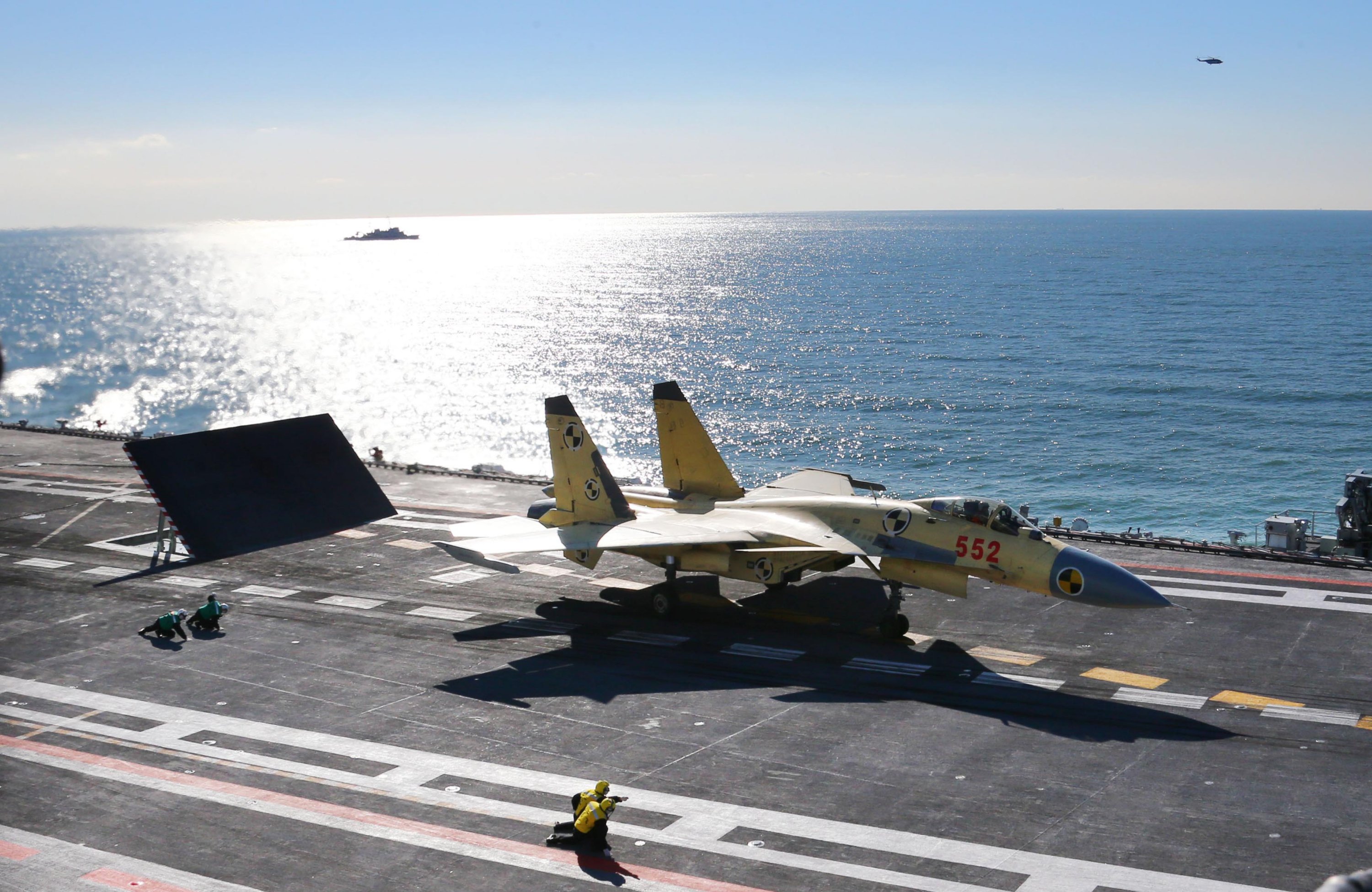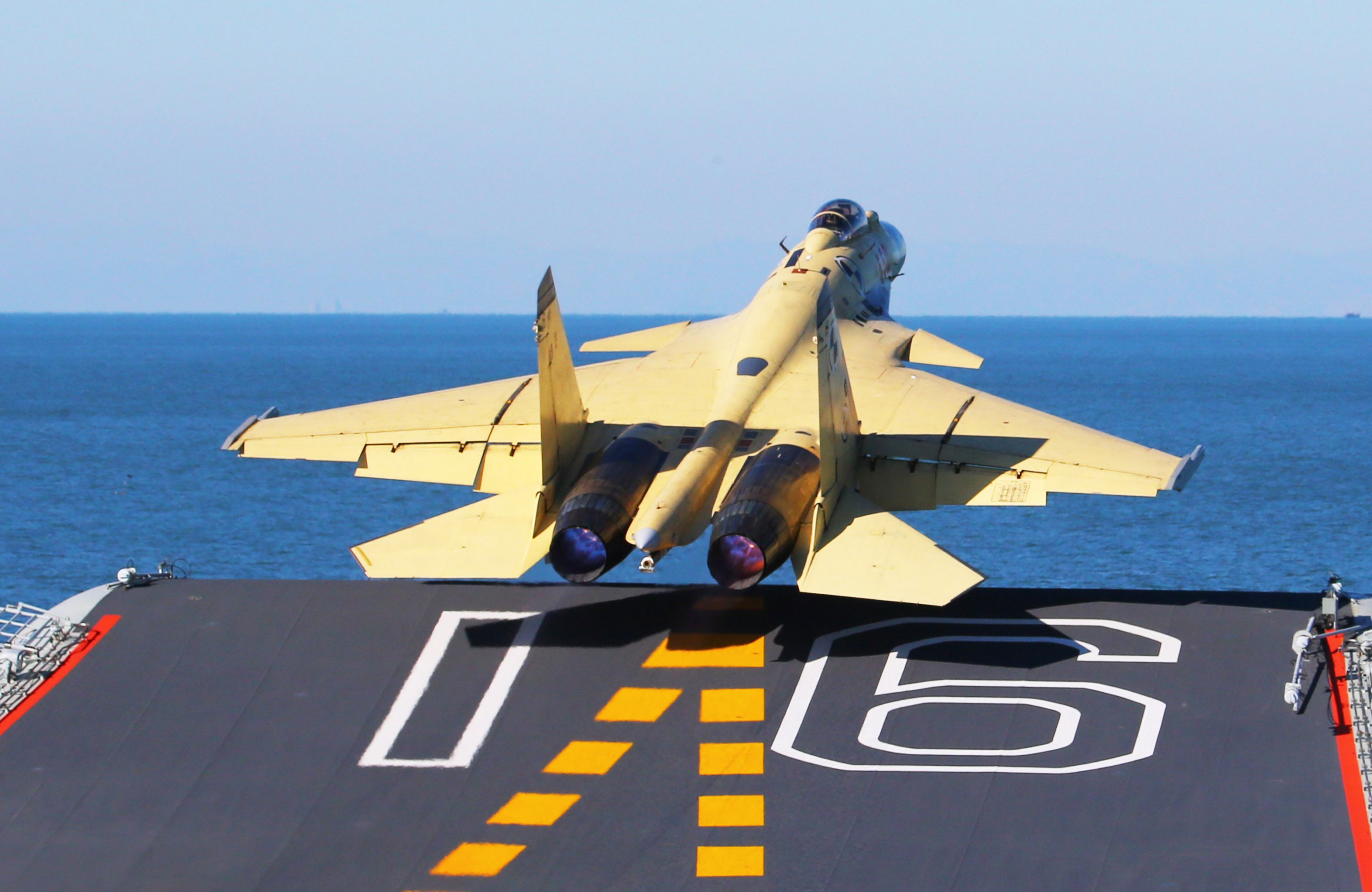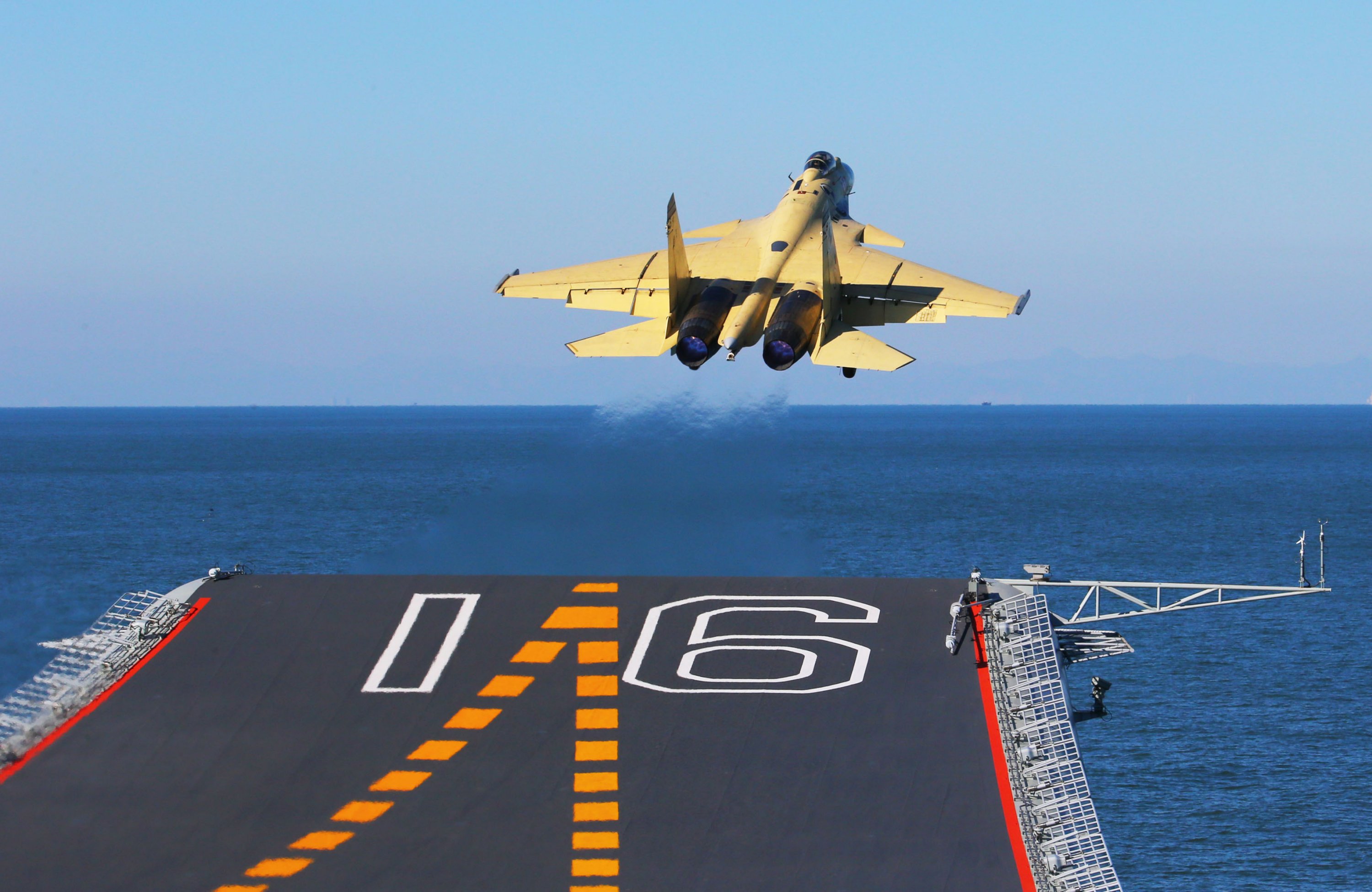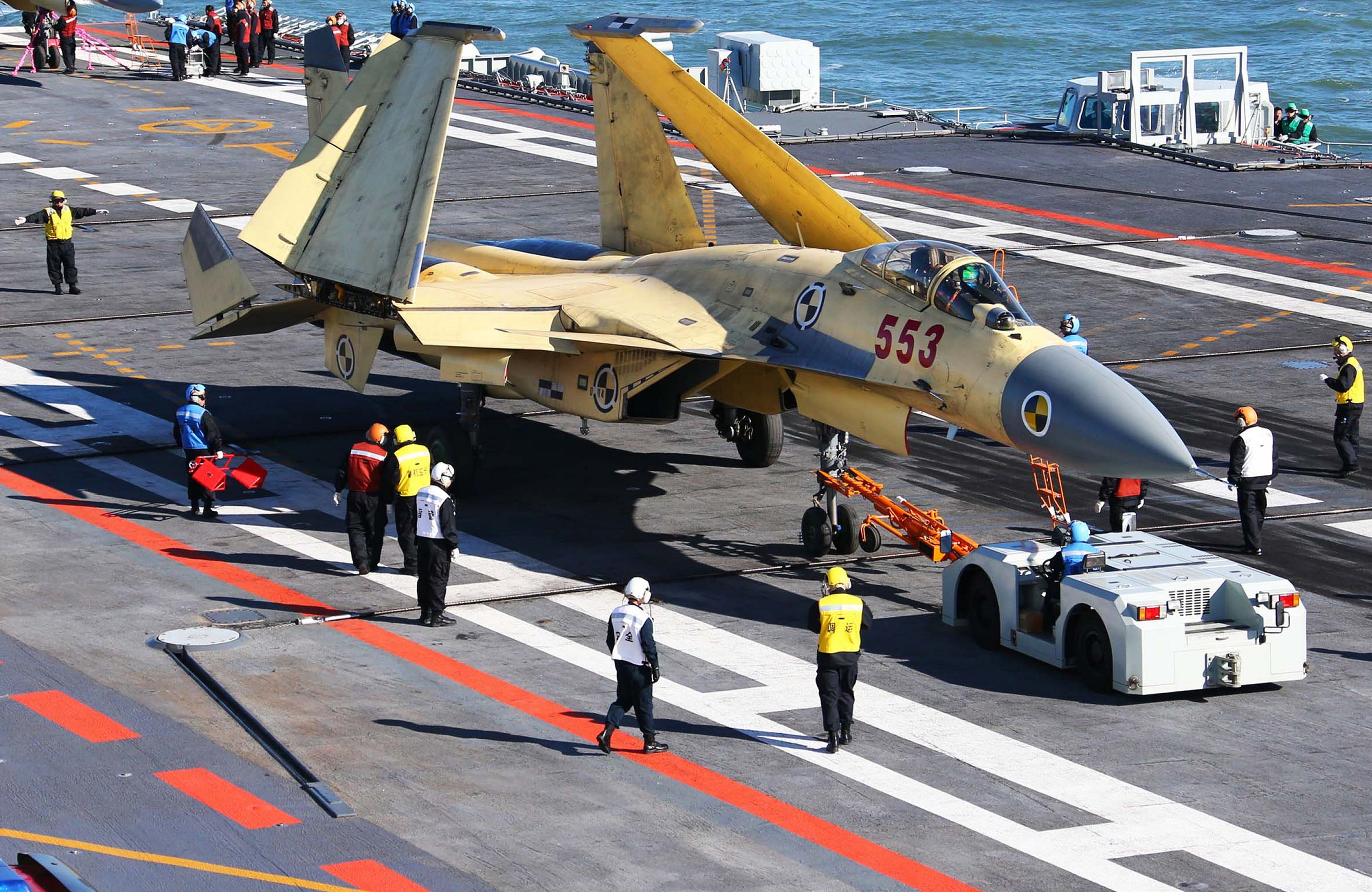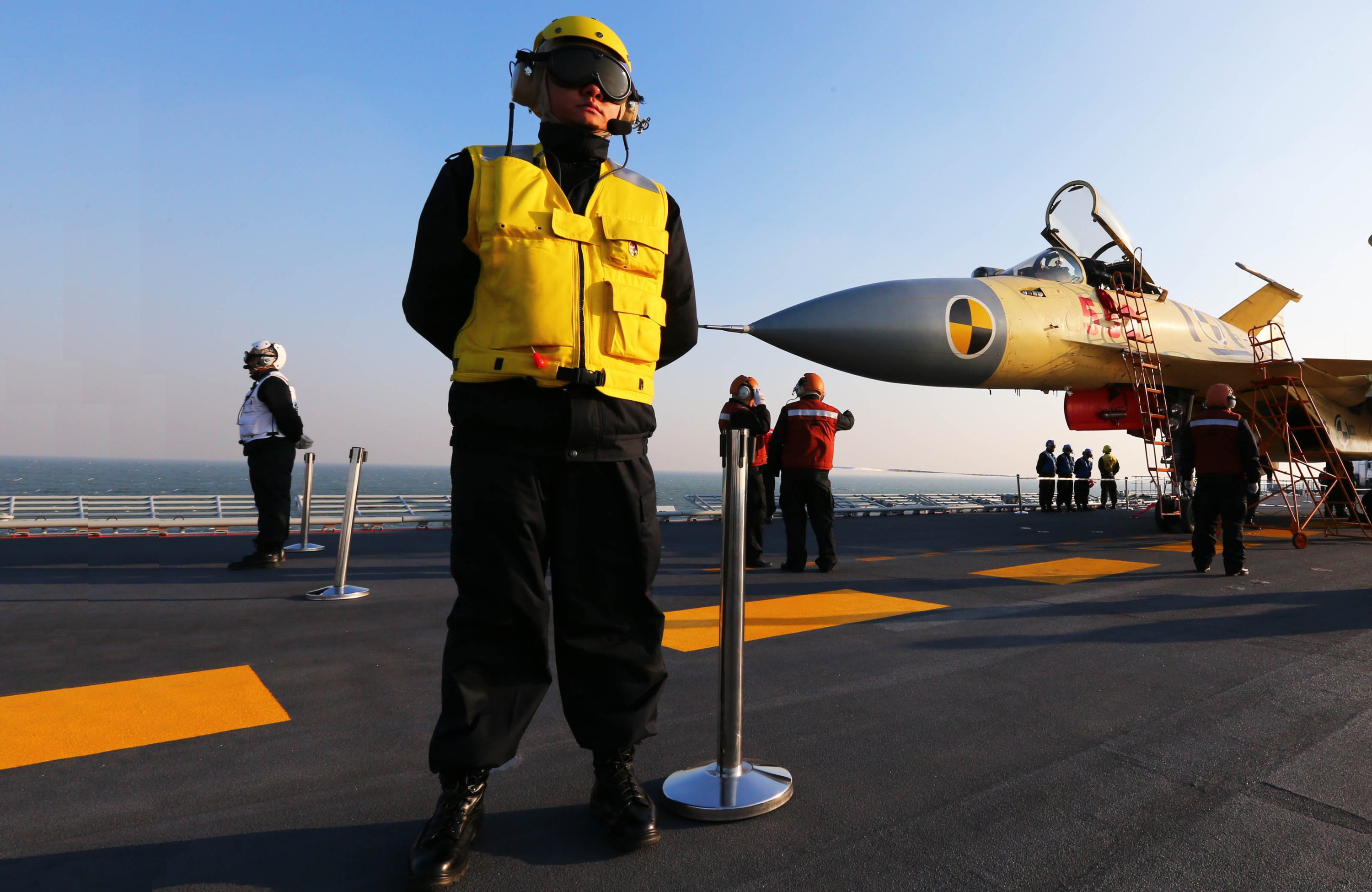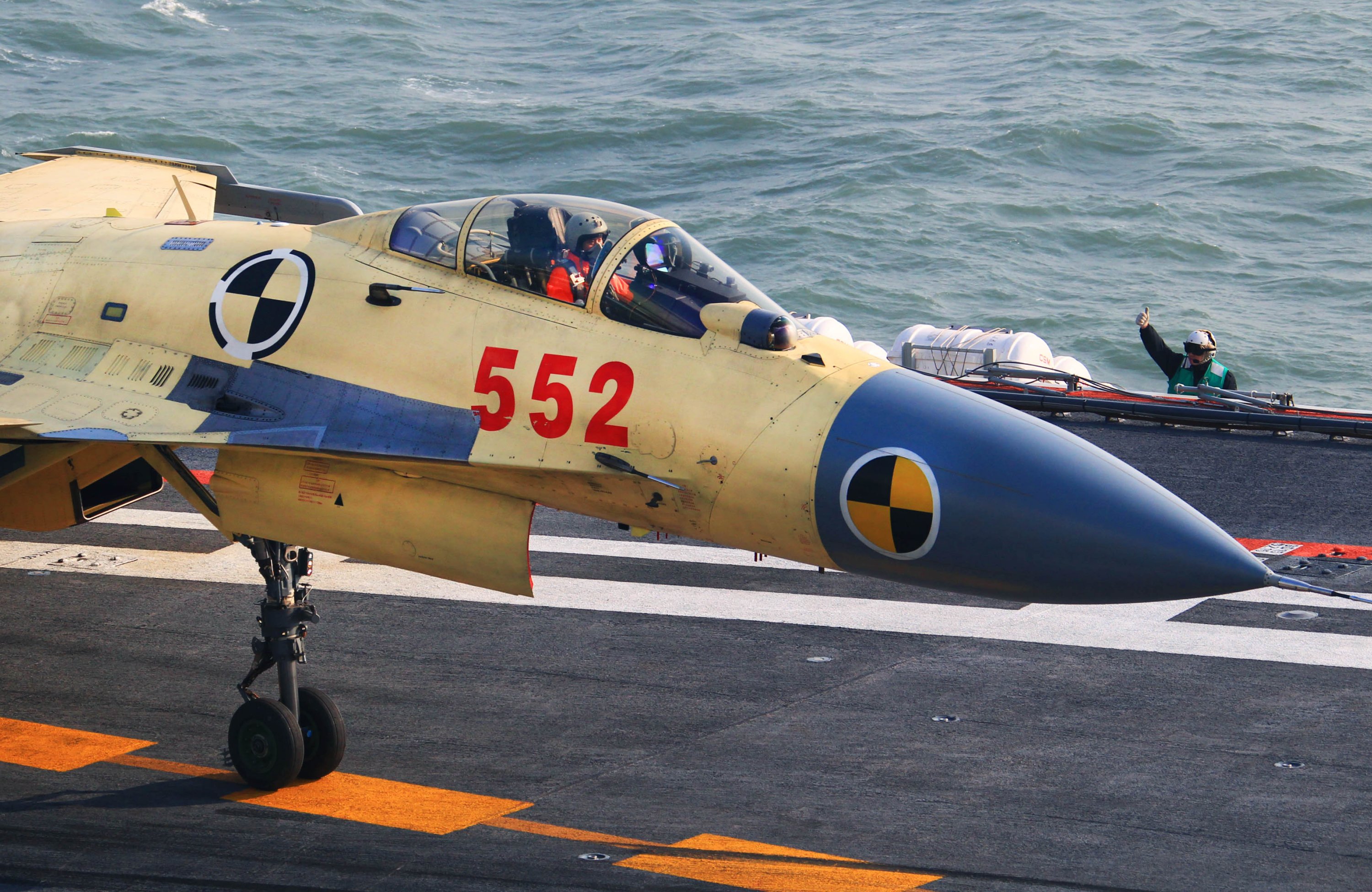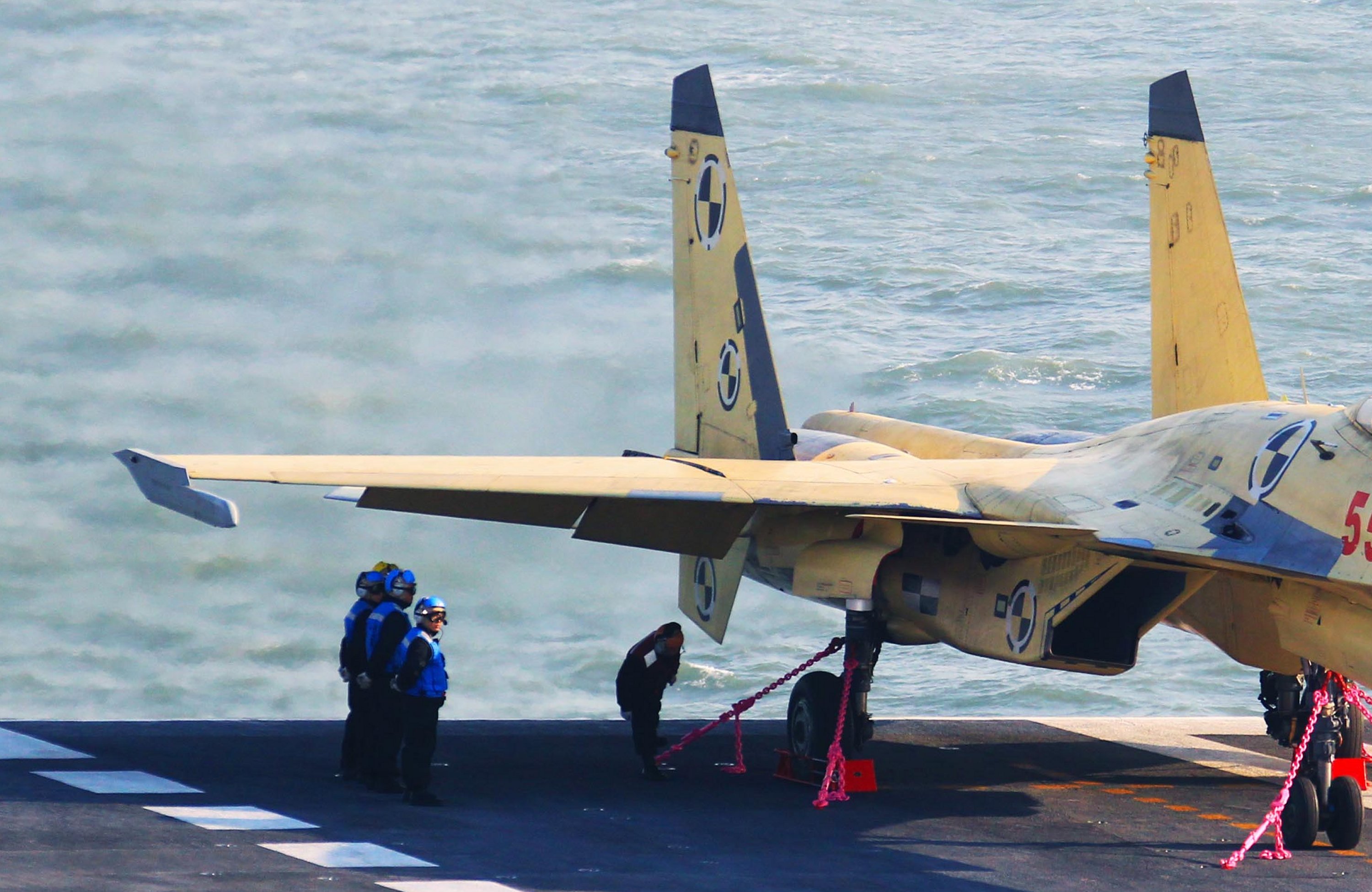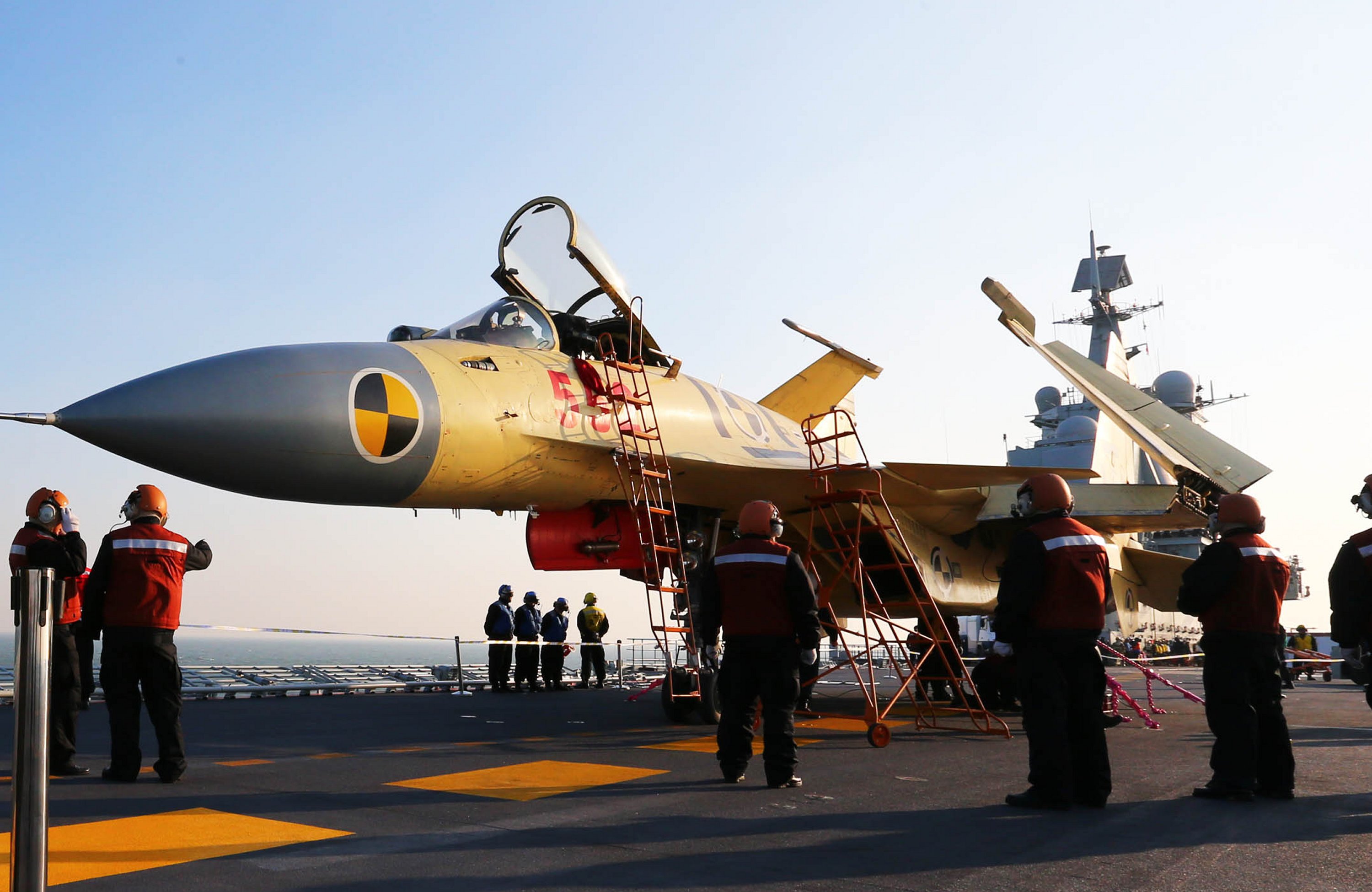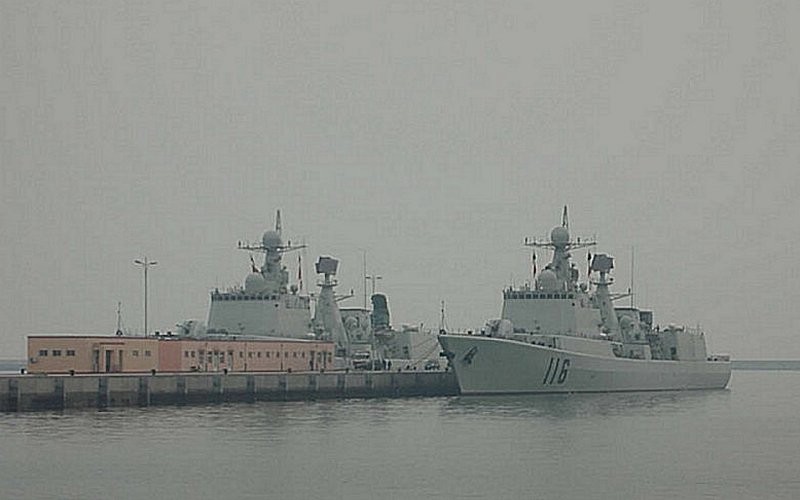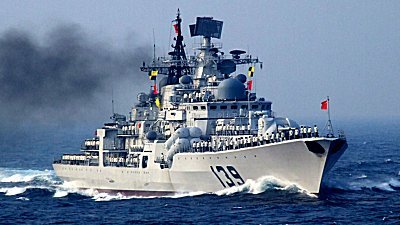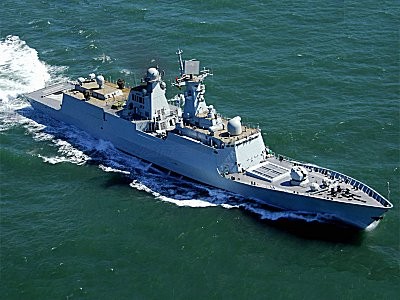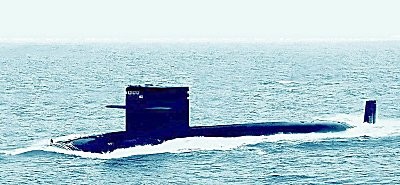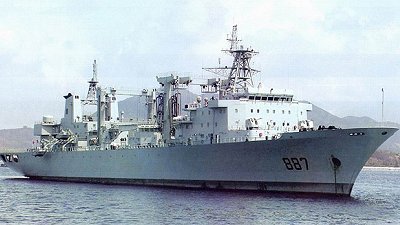 |
 VARYAG TRANSFORMATION INTO AN OPERATIONAL PLAN AIRCRAFT CARRIER |
 |
               
| ||
 LAST UPDATE: November 25, 2012 PLAN CARRIER, CV-16, LIAONING CONDUCTS J-15 TAKE-OFF & LANDINGS HISTORY OF TRANSFORMATION 1991-2009 In 1991, after the Soviet Union fell, the second full-size aircraft carrier for the Soviet Union, the Varyag, sister ship to the Kuznetsov, was under construction in the Ukraine. The Ukraine did not have the financial resources to complete her. In 1992 a Chinese delegation visited the Ukraine in the hopes of coming to terms on a purchase price of the unfinished vessel. A suitable purchase price was not agreed upon. Six years later, in 1998, the Chong Lot Travel Agency, a supposed Macau firm, arranged to buy the Varyag from the Ukraine for $20 million dollars with the stated intention of making the Varyag a casino for commercial profit. As it turned out, Chong Lot had no offices in Macau and was simply a front company for a Hong Kong firm called Chinluck Holding Co. Ltd. As it also turned out, the managing directors of Chinluck had strong ties to the Chinese Navy, the PLAN. It took three years for this front firm, Chong Lot Travel, to get permission to tow the Varyag through the Istanbul Straits and on to China. That permission was finally granted in 2001 and the following pictures document what has occurred to the Varyag since that time. |
 The Ukrain Carrier Varyag in Naval Yards in the 1990s, about 70% complete, prior to being towed away by Chong Lot Travel Agency.
|
|
In 2010 and 2011 the Chinese Navy, the PLAN, began final outfitting of the former Varyag. With Type 1030 30mm CIWS guns and FL-3000N missiles systems (all 18 cell varieties), 12 Tube Anti-sumbmarine Warfare (ASW) rocket launchers, and 24 tube chaff/decoy launchers for defensive weapons and with Ship-borne Active Phased Arrary Radar (SAPAR) and Sea Eagle Radar sensors being fitted, the carrier appeared to be ready for initial trials later in 2011. |
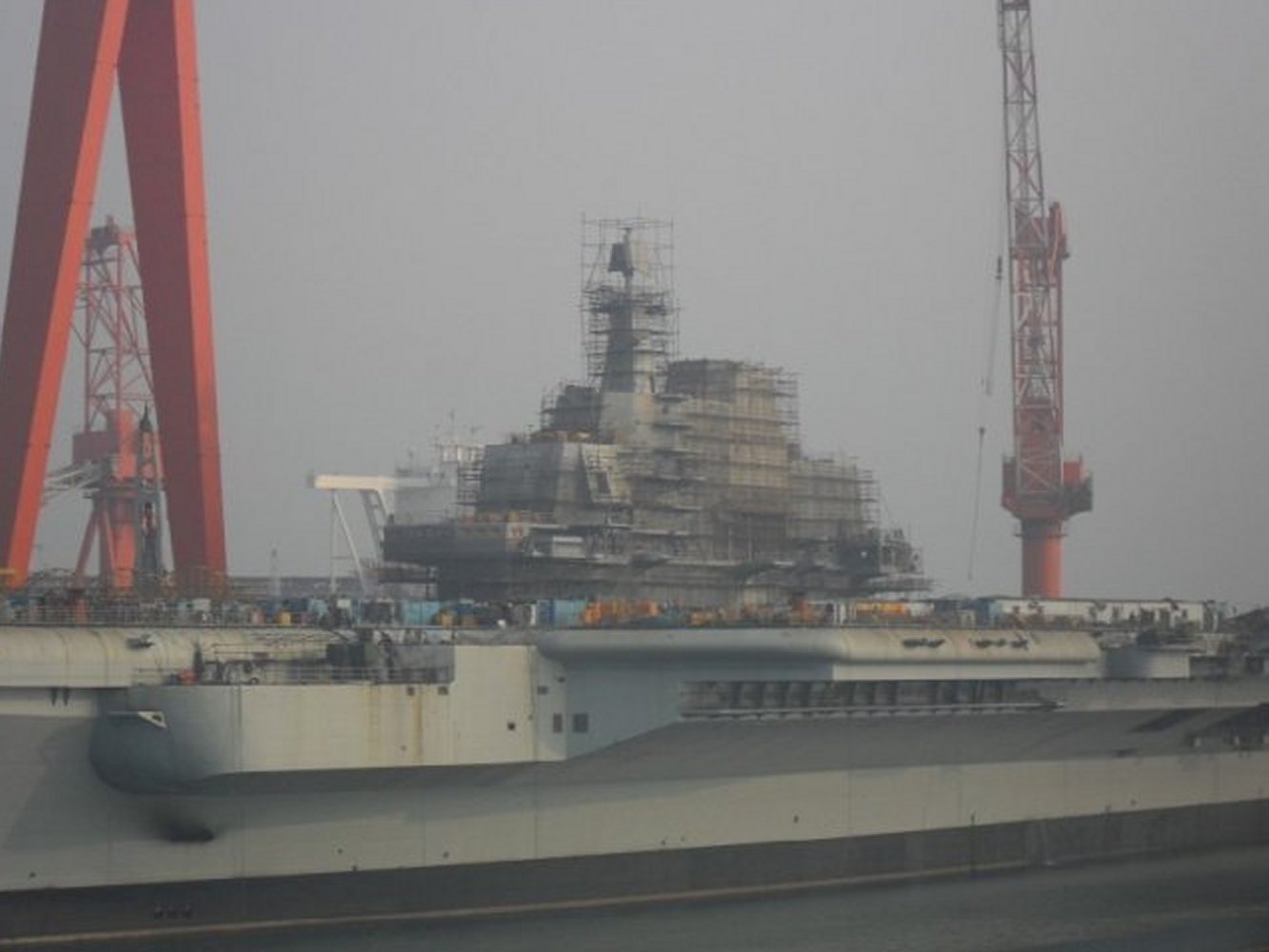  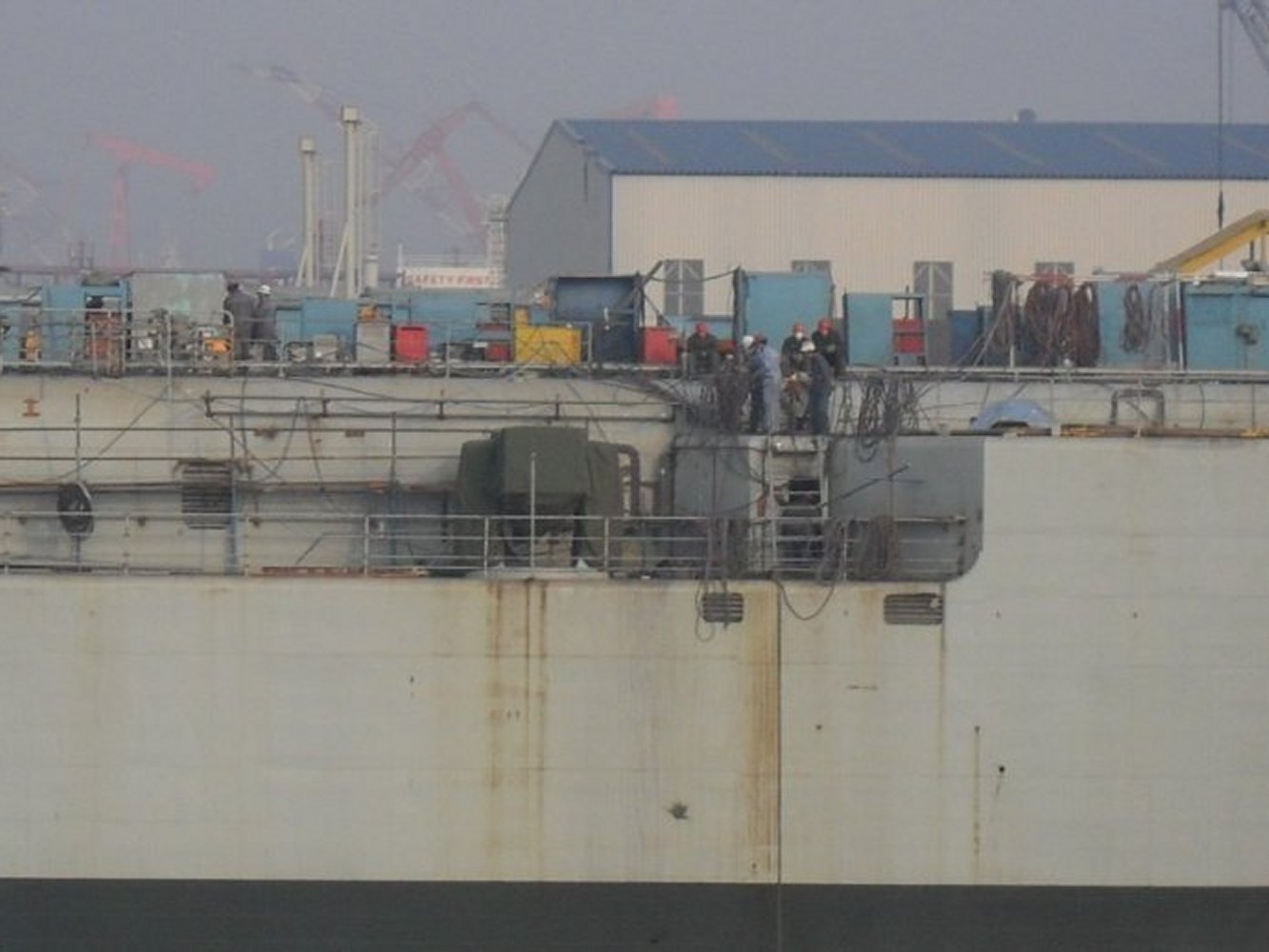 2011 Port Bow - FN-3000N missile system, the APAR & Sea Eagle Radar. (Click pic for higher res)
|
|
Outfitting complete by the end of July 2011. PLAN naval personnel board the vessel for sea trials after dock-side tests. |
    
|
|
The PLAN completed dock side testing during the first week of August 2011. This included teting her lighting systems, testing her landing lights, testing her low light systems, testing her engines, landing a helo on the deck, painting her deck, and other tests. After these tests were complete the vessel was ready to conduct her initial sea trials. |
  Tesing of the lighting systems aboard the carrier. Note the cropped Optical Landing System in the second pic.
|
|
After over eight years of refitting, which included major changes internally and externally, including new engines, new weapons systems, completely new sensors, a rebuild of the island, significant internal changes, and all of the initial testing and painting to prepare for it, the 1st aircraft carrier of the People's Republic of China's Navy, went to sea and under her own power, conducted her initial builder's trials. This was a historic day for China, and an historic date in the Western Pacific as China asserts herself on the high seas with this new, powerful vessel. |
      (Click pic for higher res) |
|
On the 30th of October the carrier left dry dock. On November 29 she left port for her second builder's trial. She had an aviation fuel truck on board which impies there are troubles with the fuel delivery system. While in dry dock she had her deck resurfaced with a new coat of anti-skid material, her hull scraped and painted, but there re no indications that trap wires have been put in place for fixed wing aircraft landings. She was caught by a commercial US satellite conducting exercises at what appears to be either 2/3rds or Standard spped during the trials. |
       |
|
Eight more Sea Trials followed these second biuilders sea trials. She went through a total of ten builder's sea trials through August of 2012 before he hand-over to the official Chinese Navy, the People's Liberation Army Navy (PLAN) as described below. Here is the list of the dates and duration of each of her ten builder's trials:
-1st: sea trial (10 Aug 2011 – 13 Aug 2011) (03 days) Towards the end of these trials, the ex-Varyag was seen to have embarked with her arrestor system fully installed, fueling expectations (and a probability) that she had conducted at least some qualification tests for J-15 aircraft either conducting touch and go, or actual landing tests. |
|
On September 24, 2012, the ex-Varyag was officially commissioned into the People's Libeeration Army Navy (PLAN) as CV-16, Liao Ning, and handed over to the PLAN. This concluded an 11 year epic story for the physical carrier itself, but is just the beginning of her true story now as a fully commissioned carrier and warship for the People's Republic of China. Her new Captain was announced as, Senior Capt. Zhang Zheng, Born 1969. There is still much to do. Her aiwing of J-15 strike aircraft is not ready yet. 6 prototypes have been built but a full airwing of between 24 and 32 aircraft needs to be built and embarked on the carrier with many months of qualification and training before that airwing will be ready to begin actual, offocial air operations in defense of Chinese national interests. |
Video of official PLAN hand-over and commissioning of the Liaoning      |
|
On November 23, 2012, it was officially announced that the People's Liberation Army Navy (PLAN) aircraft carrier, CV-16, Liaoning, had conducted its first arrested landings and ski-jump launches of chinese J-15 Naval strike fighters. Many pictures and a video were part of the announcement and picked up by the world-wide press and on the internet. This occured during her second post-commissioning PLAN qualification cruise since her commissioning in September 2012, a month earlier. However, by looking at her flight deck and jet blast deflector, and seeing the many scuff marks there and jet blast marks on the deflector when these operations were conducted, it is obvious that she had conducted earlier flight trials wherein aircraft operations, including take-offs and landings, occurred and she was readied for the "official" announcement on November 23, 2012. These likely occurred towards the end of her builders trials, 10 of which were conducted including her first sea trials in August of 2011. Here is the video and pictures of the event which heralded a significant mile stone in Chinese Navy history, wherein Chinese built aircraft were launched and recovered for the first time from the first Chinese aircraft carrier, which places her that much closer, now launching and recovering the principle reasons for her existance...those Chinese naval Strike Fighters...to becoming a fully operational Chinese aircraft carrier. |
Video of official J-15 Take-offs and landings on the Liaoning   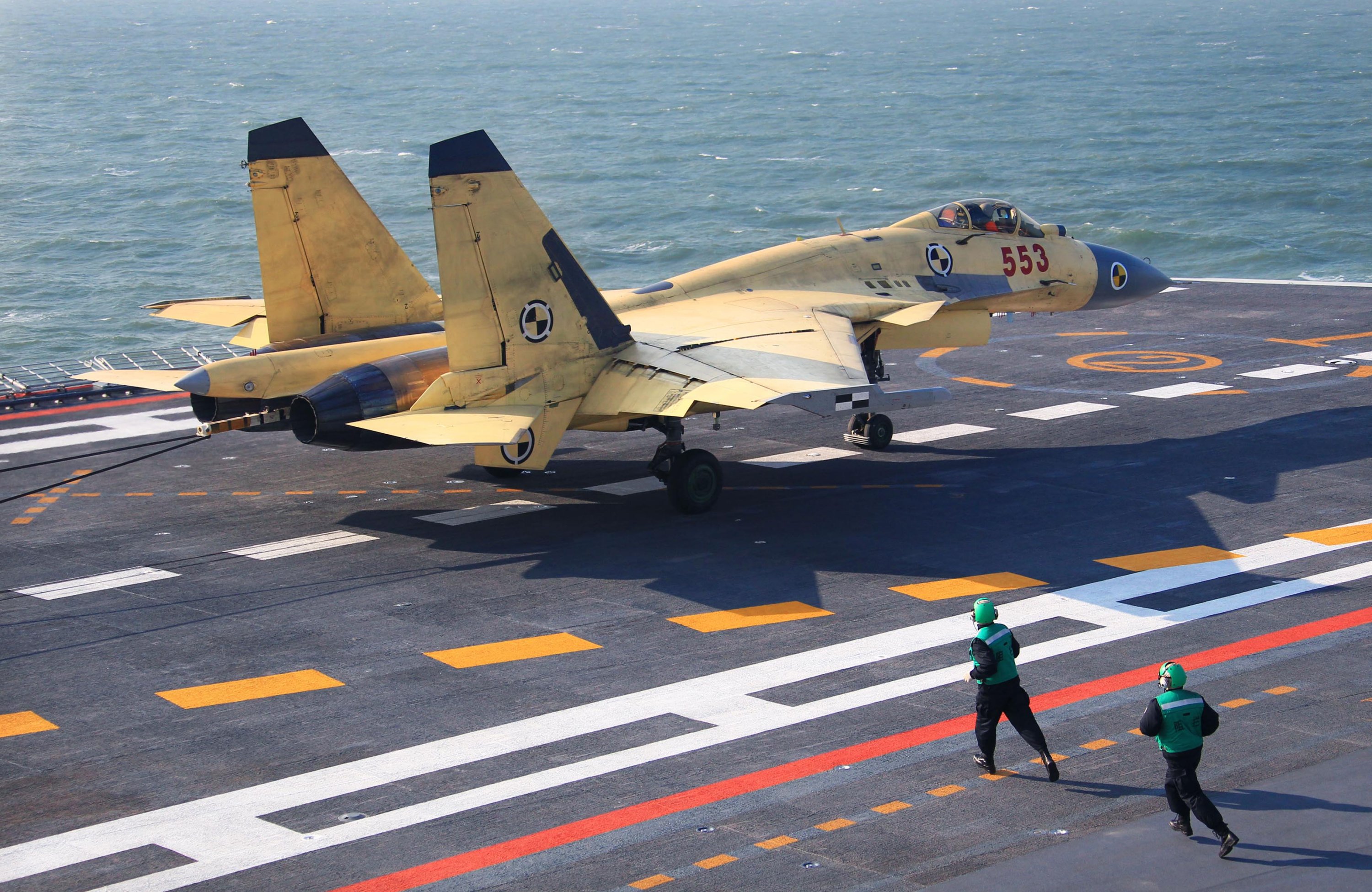 J-15 Strike Fighter conductiong arrested/rap landing qualifications on CV-16, Liaoning.
|
|
Several artists's conceptions and doctored photos showing what the PLAN CV-16, Liaoning aircraft carrier will look like once at sea conducting full operations. |
     (Click pic for higher res) |
|
In 2009, at the Wuhan Naval Research facilities, the PLAN embarked on building a full scale deck and island mockup of the Liao Ning. This included the ski-ramp and complete deck markings, the island superstructure and a complete array of sensors were added there. These fittings have been repeated in real-life on the Varyag itself as its island is rebuilt. Two full-size mockup aircraft were also placed on the mockup deck, one a Z-8 helicopter, possible a model of the new AEW helo, and a J-15 strike fighter, a carrier variant of the Chinese built J11 aircraft outfitted for carrier duties, including strike at sea. |
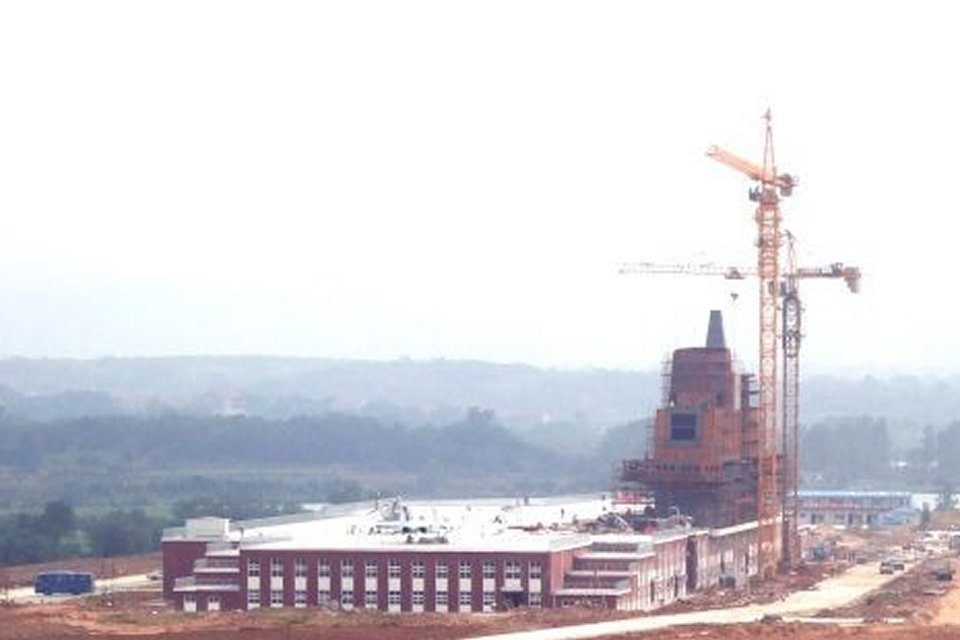 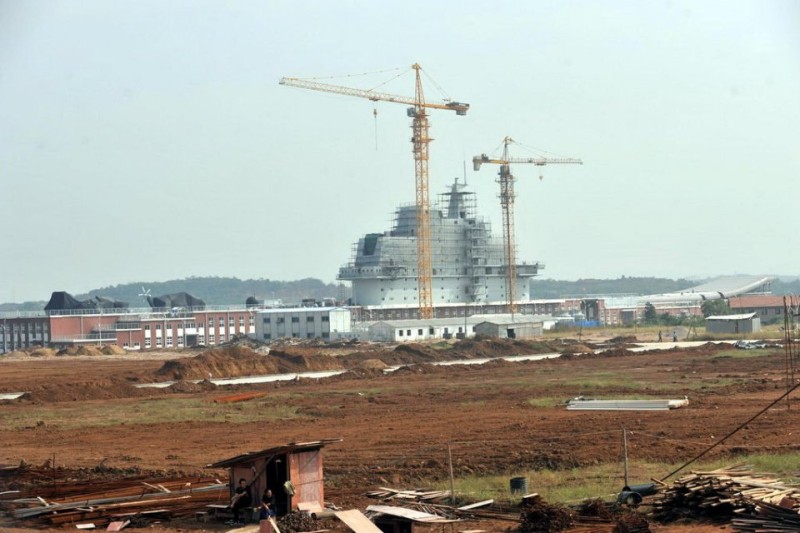 
A full-scale mockup of the Liao Ning deck and island being constructed at the Wuhan Naval Research Institute. 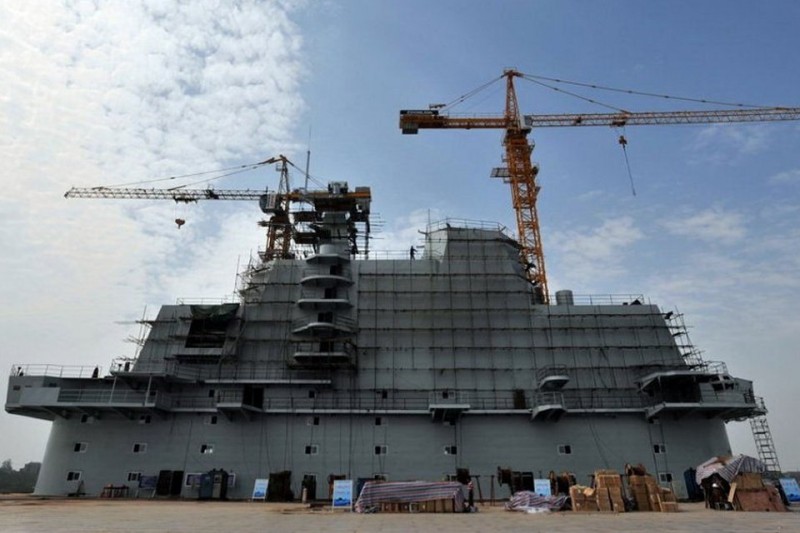  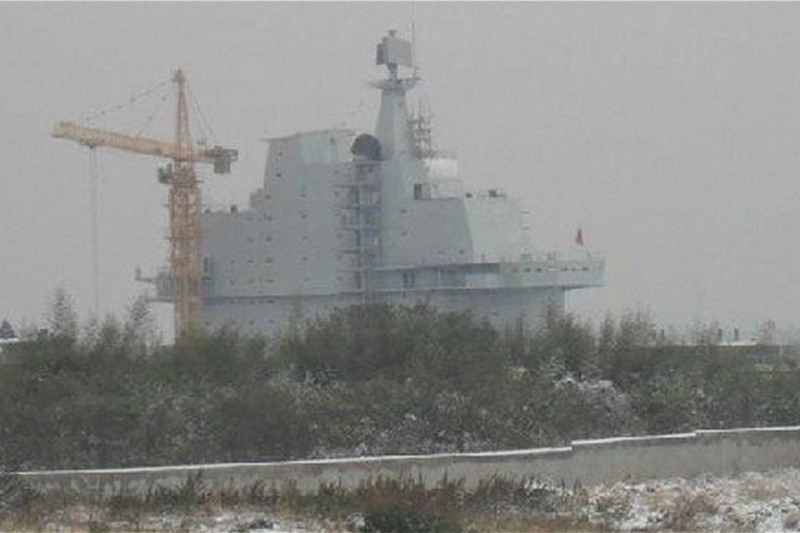
Full scale Liao Ning island mockup under construction at the Wuhan Naval Research Institute. 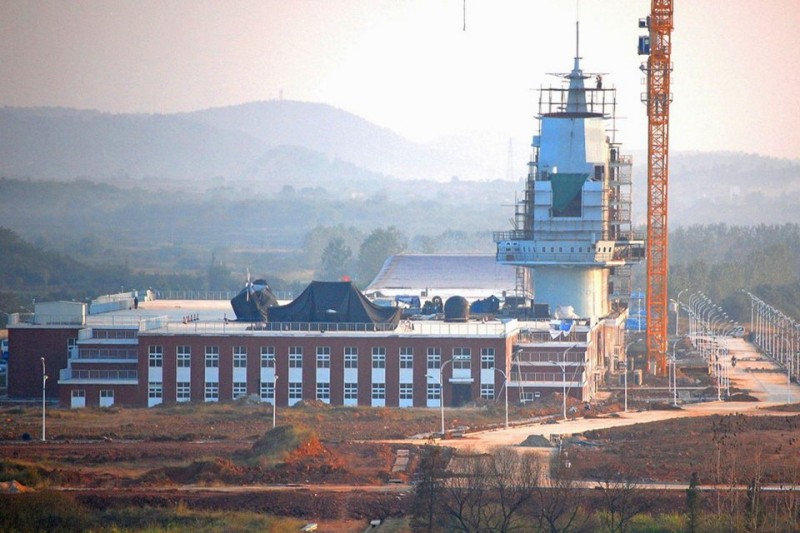
Full scale Liao Ning deck constructed at the Wuhan Naval Research Institute.  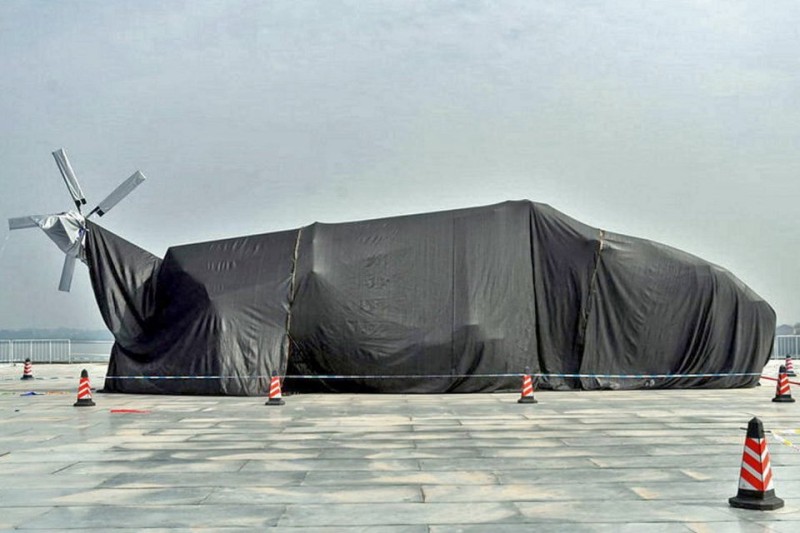   
Full scale helicopter (Z8) and strike fighter (J15) on the Liao Ning mockup deck at the Wuhan Naval Research Institute. |
|
In October of 2006, the Kommersant online newspaper in Moscow announced a deal between Russia and China where the Russians would sell up to 50 Su-33 fighters to China for $2.5 billion. Details seemed to indicate that China will spend $100 million to buy two Su-33 fighters from Komsomolsk-on-Amur Production Association for evaluation, with delivery of those two in 2007. There appeared to be an option for 12 more Su-33 fighters, with the potential for another 36 SU-33s. In that event, the deal would have totaled the $2.5 billion. The SU-33 fighter is the navalized version of the SU-27 fighter that China has purchased in large numbers from the Russians and now license builds themselves. It is the same fighter that the Russians use on their carrier, the Kuznetsov, which is the older sister ship to the ex-Varyag now turned Liao Ning. But the deals for large numbers of SU-33 fell through and the Chinese designed their own variant from their licensed built J11 (SU-27) Aircraft and called it the J-15. In addition, during those years, the Chinese were negotiating with the Russians regarding the KA-31 helicopter, which is the helicopter the Russians use on their carrier for AEW duties. The Chinese have also introduced designs for prop-driven AEW aircraft of their own similar to the United States E-2 Hawkeye aircraft. The efforts by the PLAN to obtain navalized, carrier fighters and AEW aircraft from Russia (or design their own), coupled with the installation of a non-skid surface on the flight deck of the carrier, and its painting in official PLAN colors, made it abudnantly clear that this vessel would be China's first fully operational aircraft carrier, which she ultimately became when commissioned in September of 2012. |
 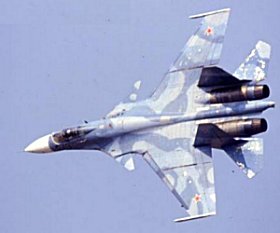  The SU-33 naval fighters that the Chinese negotiated for in 2005 and 2006. Two were puichased and delivered.
    The J-15 PLAN strke fighter, developed from the SU-33 but updated and modernized. (Click pic for higher res). 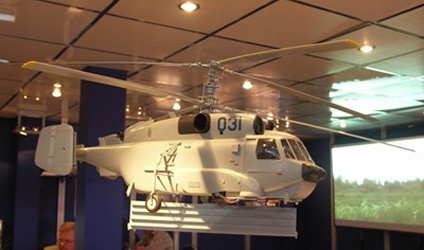 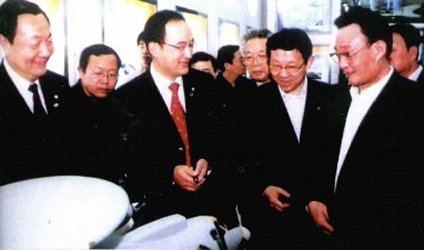 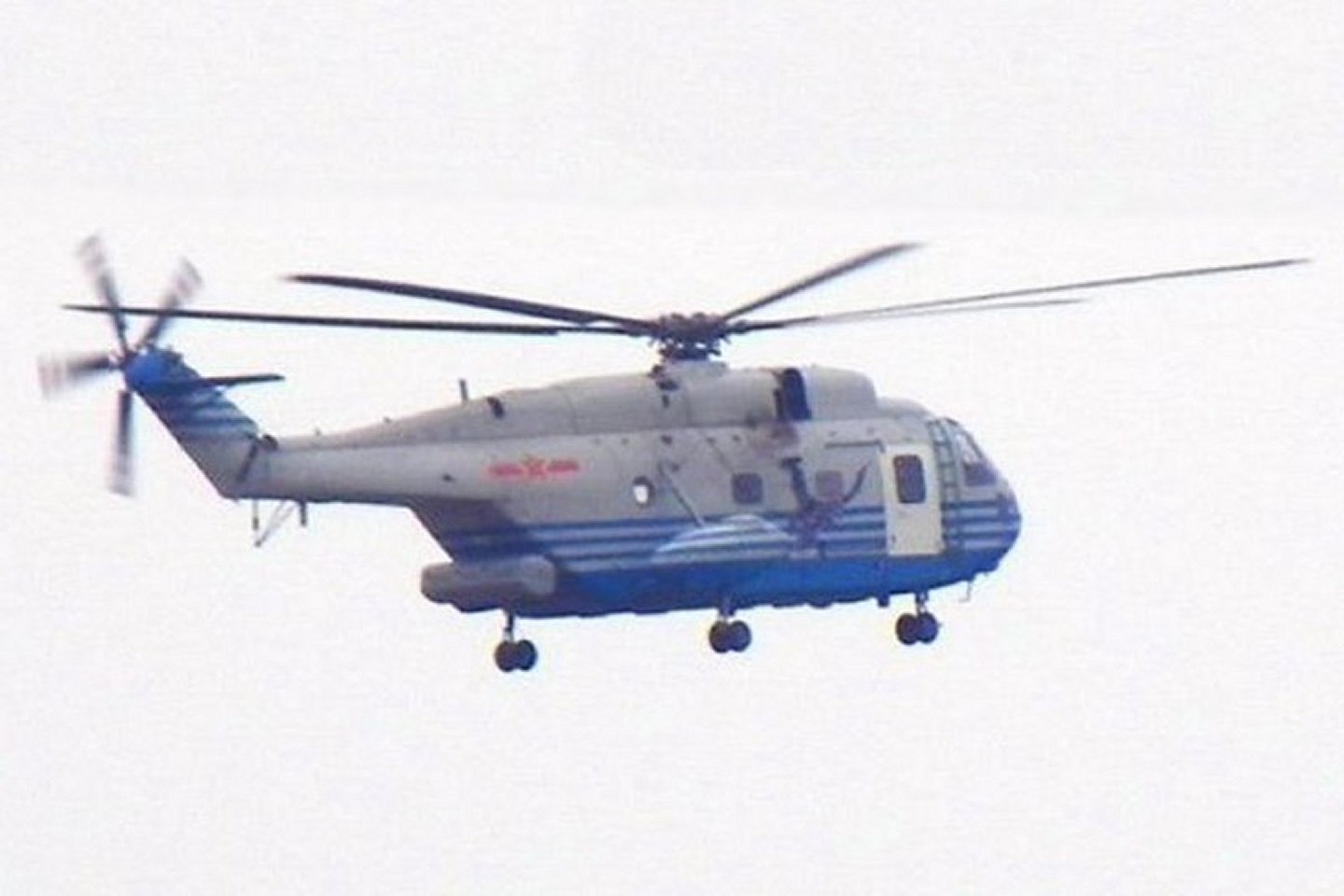 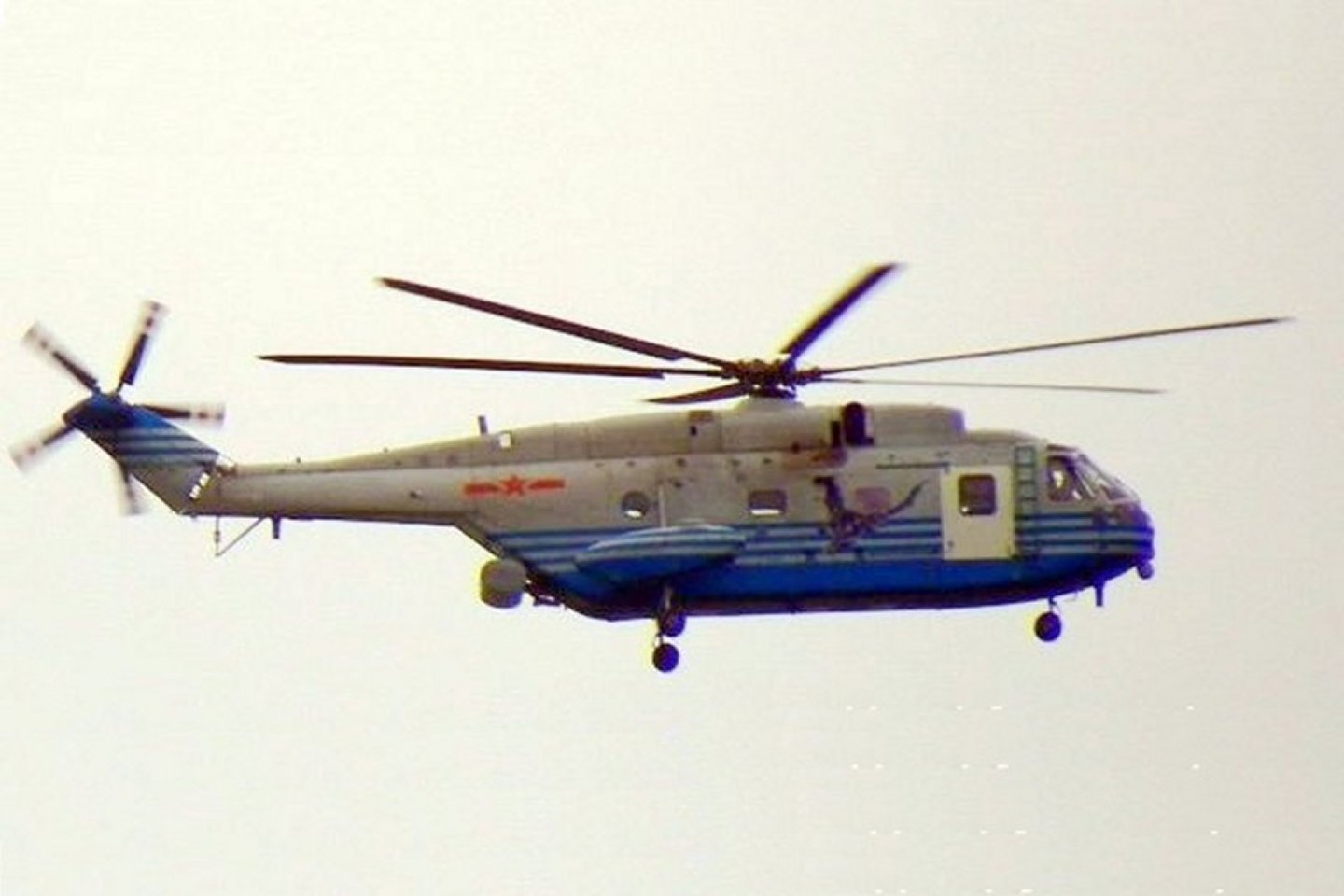 In 2009, a Chinese Z-8 helicopter outfitted for AEW capabilities underwent flight tests. |
|
While all of this has occured, the PLAN has embarked on a phenominal naval ship building and modernization program, simultaneously working on ten to twelve new classes of major combatants and building several of each at one time. This program has already developed and launched all of the necessary modern classes of guided missile destroyers, guided missile frigates, attack submarines, and supply ships to form the basis for a very powerful carrier strike group once a carrier is available...and to defend and supply it in the blue water, as the following pictures attest. |
 Six AEGIS-like area air-defense DDGs, the Type 052C Luzhao Class DDG with VLS and APAR have been built. An upgraded design, the Type 052D DDG, has since been launched with 2-3 more of those building. Very capable carrier escorts.
|
|
This author and researcher has long held that the PLAN would launch the former Varyag as soon as late 2011. They did so. It was also this author's opinion that the new Chinese carrier would not be just an experimental or test platform, but a full functional STOBAR aircraft carrier. With her hand over to the PLAN as the CV-16, Liao Ning, and the comments made that day by the Chinese Defense Minister as rep[orted by Reuters, regarding her future...it is apparent that that has occurred as well. China's Ministry of Defence said the newly named Liaoning aircraft carrier would "raise the overall operational strength of the Chinese navy" and help Beijing "effectively protect national sovereignty, security and development interests". Reuters, Sep 24, 2012It is the continued opinion of this author that the PLAN will develop her into a fully operational aircraft carrier with a wing of J-15 strike aircraft. This air wing will be supported by either indegenous Z-8 AEW hellicopters, or purchased or licend built KA-31 AEW helos operating off the carrier in conjunction with other ASW and SAR helicopters. Training will be ongoing for several years as the PLAN gains experience in carrier operations, and will prepare them for the introduction of at least two of their own indigenous carriers in the late 20-teens, which will include Chinese indigenous navalized aircraft and their own, more capable AEW and EW aircraft. Ultimately, it is this author's opinion that the PLAN will build 4-5 aircraft carriers and have at least three at sea at all times with fully functional aircraft carrier strike groups in support. For more information on other aircraft carriers, see www.WorldWideAircraftCarriers.com. For more information on US Naval development in the 21st Century, see US NAVY 21ST CENTURY. For more information about AEGIS and AEGIS-like escort vessels, see AEGIS Vessels of the World. For more information on China's Naval buildup, see click on the "HOME PAGE" Tab at the top of this page. |
|
